Four new nodulose-spored species of Inocybe (Agaricales) from West Africa
- PMID: 36789280
- PMCID: PMC9903347
- DOI: 10.3114/fuse.2022.10.01
Four new nodulose-spored species of Inocybe (Agaricales) from West Africa
Abstract
We describe four new nodulose-spored species of Inocybe from tropical regions of Africa: I. beninensis, I. flavipes, I. fuscobrunnea and I. pallidiangulata. The new species are recognised based on morphological data and phylogenetic analyses of ITS, 28S and RPB2 sequences. Phylogenetic analyses indicated that I. flavipes and I. beninensis are part of a subclade leading to the I. calida group. Inocybe fuscobrunnea appears sister to the I. asterospora group. Inocybe pallidiangulata is nested within a clade of mainly tropical species from South Asia, Africa, and South America, close to the subclade of I. lilacinosquamosa and I. ayangannae from Guyana. Complete descriptions and illustrations, including photographs and line drawings, and a key to nodulose-spored taxa of tropical African species of Inocybe are provided. Citation: Aïgnon HL, Jabeen S, Verbeken A, Matheny PB, Yorou NS, Ryberg M (2022). Four new nodulose-spored species of Inocybe (Agaricales) from West Africa. Fungal Systematics and Evolution 10: 1-18. doi: 10.3114/fuse.2022.10.01.
Keywords: Agaricomycetes; Inocybaceae; ectomycorrhizal fungi; molecular phylogeny; new taxa; systematics; taxonomy.
© 2022 Westerdijk Fungal Biodiversity Institute.
Conflict of interest statement
Conflict of interest: The authors declare that there is no conflict of interest.
Figures

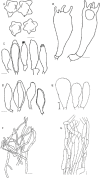

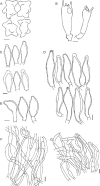

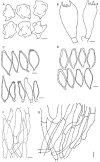

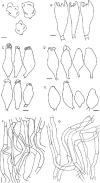

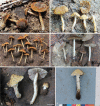
References
-
- Aïgnon HL, Acar I, Naseer A, et al. (2021b). State of knowledge on the diversity, phylogeny and distribution of Inocybaceae in Africa. Asian Journal of Mycology 4: 56–66.
-
- Aïgnon HL, Naseer A, Matheny BP, et al. (2021c). Mallocybe africana (Inocybaceae, Fungi), the first species of Mallocybe described from Africa. Phytotaxa 478: 49–60.
-
- Akil ME, Khouader M, Chliyeh M, et al. (2015). A new species of Basidiomycetes for the fungal diversity of Morocco: Inocybe squarrosa and I. rufuloides. International Journal of Pure & Applied Bioscience 3: 27–34.
-
- Bandini D, Oertel B. (2020). Three new species of the genus Pseudosperma (Inocybaceae). Czech Mycology 72: 221–250.
LinkOut - more resources
Full Text Sources
Miscellaneous
